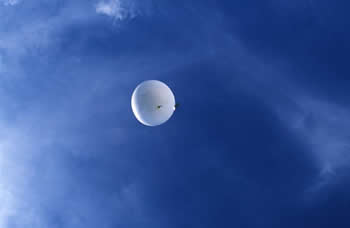A weather balloon rises in the atmosphere. The air in the atmosphere is mostly nitrogen molecules.
Click on image for full size
UCAR
Changing the Nitrogen Cycle, Changing the Planet
Look up into the sky and you look through millions of air molecules, eighty percent of which are nitrogen molecules, two atoms of nitrogen bonded together. Nitrogen is found all over the planet, not just in the sky. It is in living things, air, water, even animal waste. It travels between living and non-living parts of our planet via a process called the nitrogen cycle, one of the Earth’s biogeochemical cycles.
As humans change the way we live on the planet, the way that nitrogen moves around the Earth also changes. Nitrogen atoms may seem small enough to be easily overlooked. We look right through the ones in the air, do we not? Yet recent changes in the nitrogen cycle are causing a very noticeable effect on natural environments and human health. Lakes are clogged with aquatic weeds. Dead zones have formed in areas of the oceans where animals can not survive. Air pollutants that contain nitrogen decreasing air quality and greenhouse gases that contain nitrogen are becoming more common.
Read on to explore two examples of how humans affect the nitrogen cycle and how the changing nitrogen cycle affects humans and ecosystems.
Last modified May 7, 2007 by Lisa Gardiner.
You might also be interested in:
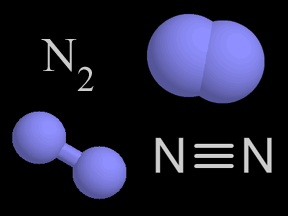
Nitrogen is a chemical element with an atomic number of 7 (it has seven protons in its nucleus). Molecular nitrogen (N2) is a very common chemical compound in which two nitrogen atoms are tightly bound
...more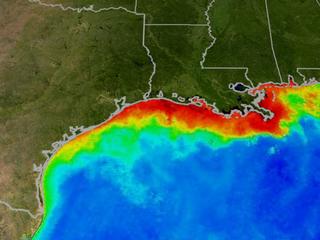
Plants need nitrogen. It is a nutrient that allows them to grow larger and faster. Plants are not able to make use of the nitrogen gas in the atmosphere, two nitrogen atoms bonded together. It is not a
...more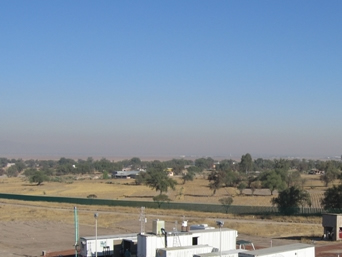
While most of the air in our atmosphere is made of nitrogen gas (two atoms of nitrogen bonded together), there are other gases in our atmosphere that contain nitrogen as well. They may make up only a small
...more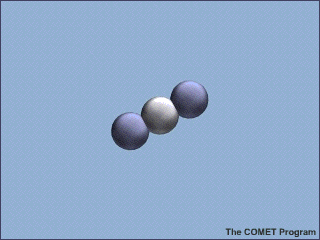
Less than 1% of the gases in Earth's atmosphere are called greenhouse gases. Even though they are not very abundant, these greenhouse gases have a major effect. Carbon dioxide (CO2), water vapor (H2O),
...more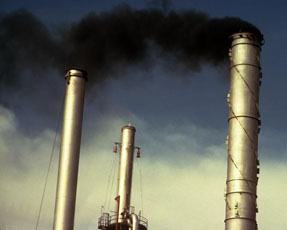
Leaders from 192 nations of the world are trying to make an agreement about how to limit emissions of heat-trapping greenhouse gases, mitigate climate change, and adapt to changing environmental conditions.
...more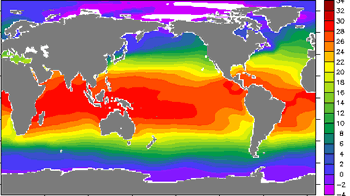
Climate in your place on the globe is called regional climate. It is the average weather pattern in a place over more than thirty years, including the variations in seasons. To describe the regional climate
...more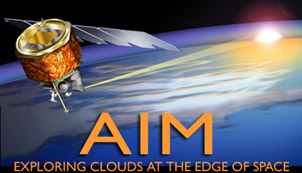
Television weather forecasts in the space age routinely feature satellite views of cloud cover. Cameras and other instruments on spacecraft provide many types of valuable data about Earth's atmosphere
...more


